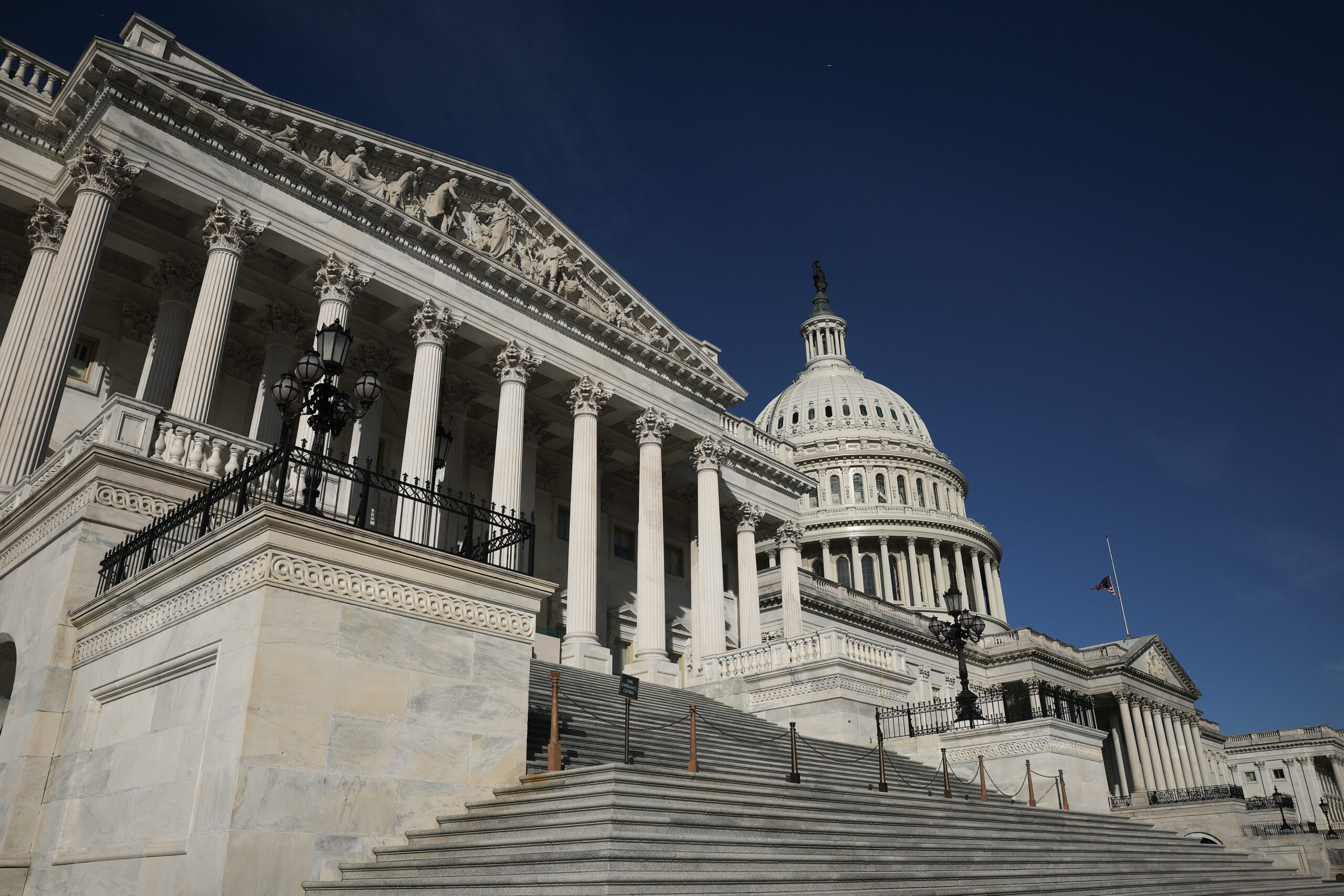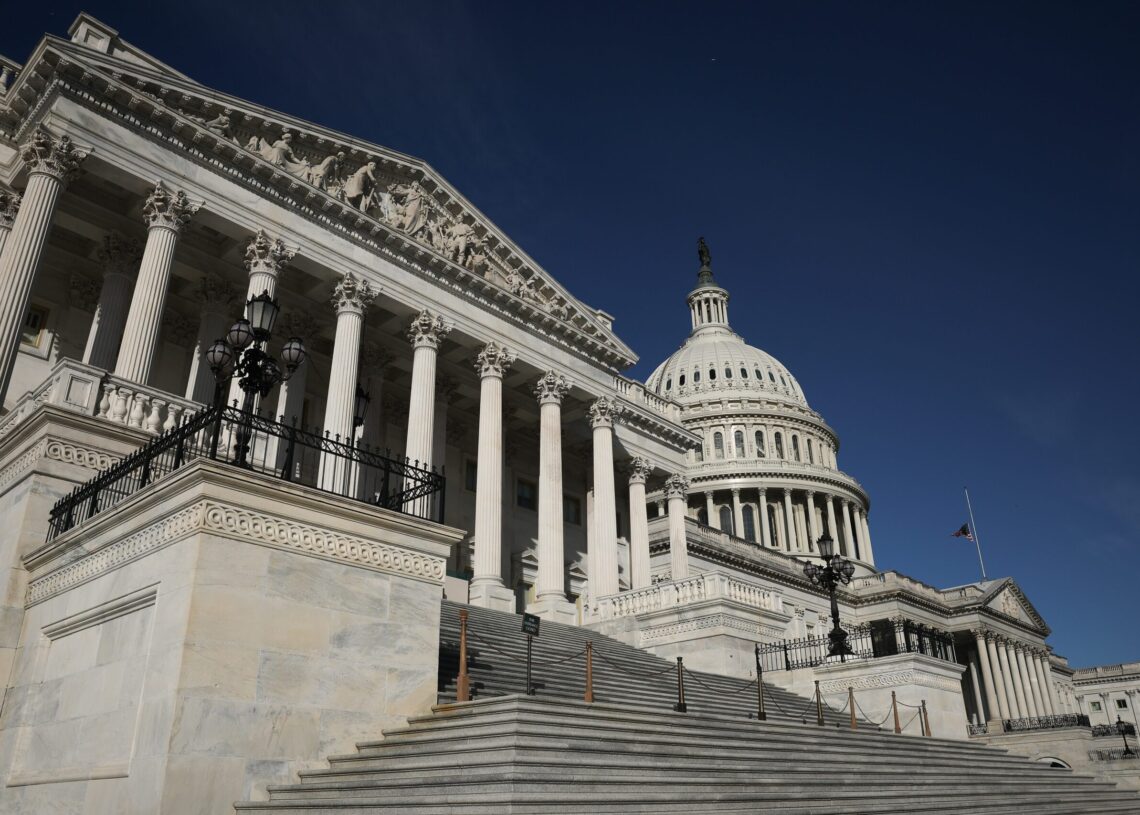
President Donald Trump signed a bill into law Wednesday night to reopen the government, after the House passed it earlier in the day. After a 43-day stalemate, seven Senate Democrats and one independent joined Senate Republicans over the weekend to broker a new deal to end the longest shutdown in U.S. history.
President Donald Trump signed a bill into law Wednesday night to reopen the government, after the House passed it earlier in the day. After a 43-day stalemate, seven Senate Democrats and one independent joined Senate Republicans over the weekend to broker a new deal to end the longest shutdown in U.S. history.
Here’s what we know so far about what will happen now that the government has reopened.
The bill’s enactment reopened government “immediately” and funds government at current levels through Jan. 30, 2026. Some portions of the federal government, including the Departments of Agriculture and Veterans Affairs, as well as military construction and legislative branch operations, will be funded through September 2026.
The shutdown put at least 670,000 federal workers on furlough, while about 730,000 others were working without pay, according to the Bipartisan Policy Center. Workers at several agencies were told Wednesday afternoon to expect to show up to work Thursday if Trump signed the legislation ending the shutdown.
The Trump administration has threatened to withhold back pay from furloughed workers, despite a 2019 law that guarantees back pay to furloughed employees. The funding deal reaffirmed that furloughed employees will receive back pay. It is still unclear, however, when workers will receive those paychecks, and timelines will likely vary by agency.
The Office of Management and Budget did not respond to questions about worker pay Wednesday.
Last week, the Trump administration laid out a plan to gradually reduce flights at some of the country’s busiest airports, including those serving Atlanta, Chicago, Dallas, Los Angeles and D.C., saying it was necessary to eliminate potential safety risks as air traffic controllers continued to work without pay.
Airlines are still preparing to make further cuts to their schedules under that plan. The 6 percent reduction in flight traffic that came into effect Tuesday is scheduled to grow to 8 percent by Thursday and 10 percent by Friday.
Many carriers said they are working to ensure customers have at least 24 hours’ notice if their flight will be disrupted and have been urging travelers to check their flight status before heading to the airport. American, Delta, Southwest and United are among those who informed passengers that they had completed adjustments to their schedules, including flight cancellations through Wednesday.
At a news conference Tuesday, Transportation Secretary Sean P. Duffy stopped short of giving a timeline for when the Transportation Department would allow airlines to fully resume operations.
“We’re going to wait to see the data on our end before we take out the restrictions in travel,” he said, though he noted that the agency already was seeing improvement with fewer facilities reporting staffing issues with air traffic controllers.
Aviation experts warned that it will take time before operations return to normal, even after government reopens. Airlines will need to rework their schedules and ensure that aircraft and crew members are in the right places. Federal and airline officials will likely be scrambling to restore as much service as possible before an estimated 31 million people are expected to fly around the Thanksgiving holiday period.
Full payments to Supplemental Nutrition Assistance Program, also known as SNAP or food stamps, should be disbursed soon after the government is reopen. During the shutdown, the Trump administration has been engaged in court battles to prevent full SNAP payments from being distributed to the 42 million low-income Americans at risk of food insecurity. The funding holdup caused by the government shutdown has left families across the country in agonized uncertainty as they stretch budgets while waiting for aid.
The bill would appropriate funding for SNAP through September 2026, preventing similar confusion and turmoil — at least for about another year.
The shutdown temporarily shuttered most of D.C.’s most prominent museums, many of which are funded by a mix of federal appropriations and private donations. The National Gallery of Art closed on Oct. 4, and all Smithsonian facilities, including the National Zoo, have been closed since Oct. 12. (Zoo animals have continued to receive care throughout the shutdown.)
In past shutdowns, affected museums and historical sites generally reopened to the public soon after the government reopened.
Trump and White House budget director Russell Vought had repeatedly warned they would lay off federal workers during the shutdown, which Democrats dismissed as a bargaining tactic. The administration sent layoff notices, which are also being called reductions-in-force, to about 4,000 workers in October at departments including: Commerce, Education, Energy, Health and Human Services, Housing and Urban Development, Homeland Security and Treasury.
However, the continuing resolution passed by the Senate instructed the agencies to reverse those layoffs, which had already been held up by a court injunction. After the bill is enacted, agencies must reinstate any employee who received a reduction-in-force notice within five days. Also, the stopgap measure bars the government from proceeding with any more mass layoffs until Jan. 30, 2026.
The deal did not include an extension of the Affordable Care Act subsidies that will expire Dec. 31, something Democrats had demanded — and the cause of the impasse that originally brought the government shutdown. Republicans suggested they were open to debate on the issue, but only after the government was reopened. House Speaker Mike Johnson (R-Louisiana) has not promised a vote on the ACA subsidies, without which average premiums for Americans who buy coverage on Healthcare.gov are expected to rise 30 percent in the new year.
Lori Aratani, Niha Masih, Mariana Alfaro and Fritz Hahn contributed to this report.
The post What does the end of the government shutdown mean for you
appeared first on Washington Post.




